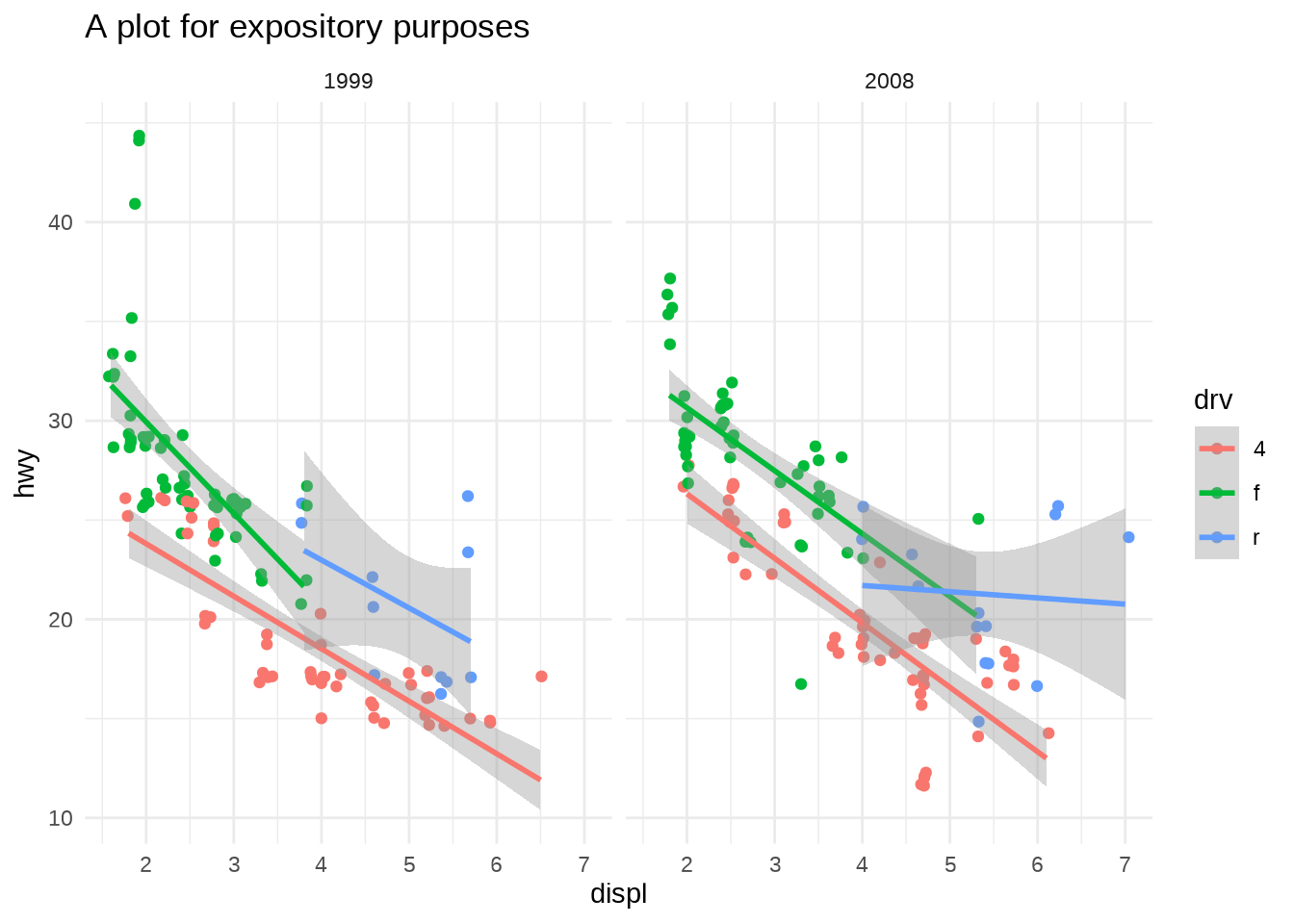19.4 The plot() method
19.4.1 ggplot structure
The user-facing code and internal code is also separated by when they are evaluated. The user-facing code like geom_smooth() is evaluated immediately to give you a ggplot object, but the internal code is only evaluated when a ggplot object is printed or plotted, via print() and plot().
The following code simply creates a ggplot object from user-facing code, and DOES NOT print or plot the ggplot (yet).
p <- ggplot(mpg, aes(displ, hwy, color = drv)) +
geom_point(position = position_jitter(seed = 2022)) +
geom_smooth(method = "lm", formula = y ~ x) +
facet_wrap(vars(year)) +
ggtitle("A plot for expository purposes")The ggplot object is actually just a list under the hood:
[1] "gg" "ggplot"[1] "list"19.4.2 Display
Evaluating the ggplot is what gives you the actual points, rectangles, text, etc. that make up the figure (and you can also do so explicitly with print()/plot())

These are two separate processes, but we often think of them as one monolithic process:
defining_benchmark <- bench::mark(
# Evaluates user-facing code to define ggplot,
# but does not call plot/print method
p <- ggplot(mpg, aes(displ, hwy, color = drv)) +
geom_point(position = position_jitter(seed = 2022)) +
geom_smooth(method = "lm", formula = y ~ x) +
facet_wrap(vars(year)) +
ggtitle("A plot for expository purposes")
)
plotting_benchmark <- bench::mark(
# Plots the ggplot
plot(p)
)# A tibble: 2 × 4
min median `itr/sec` mem_alloc
<bch:tm> <bch:tm> <dbl> <bch:byt>
1 2.95ms 3.09ms 318. 30.34KB
2 235ms 235ms 4.26 3.58MB